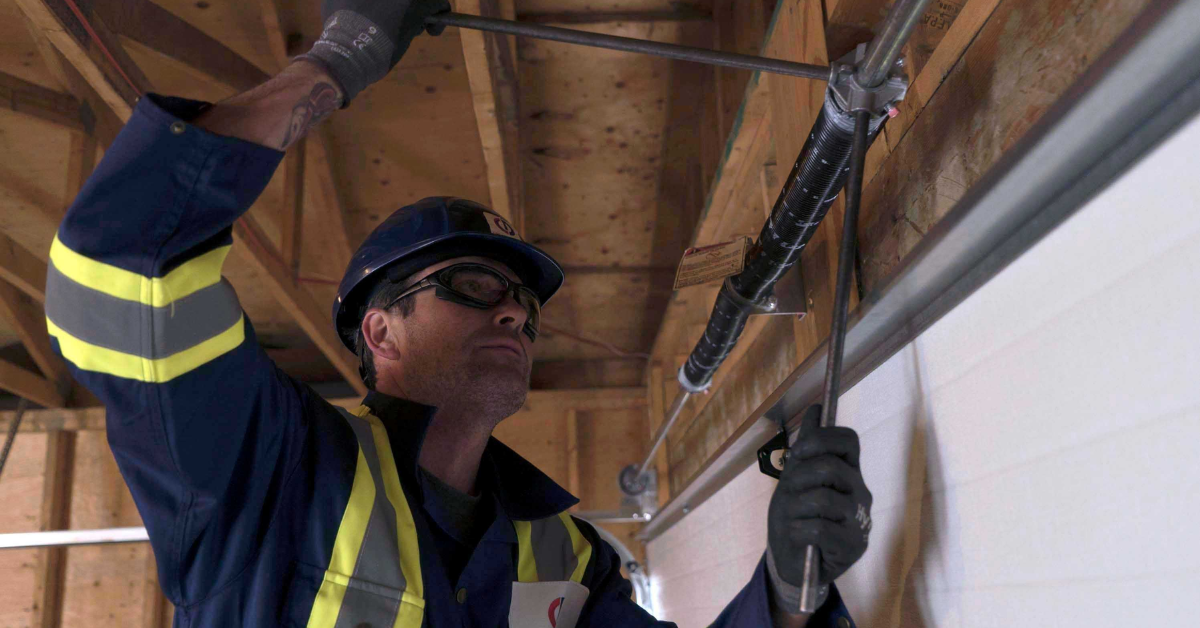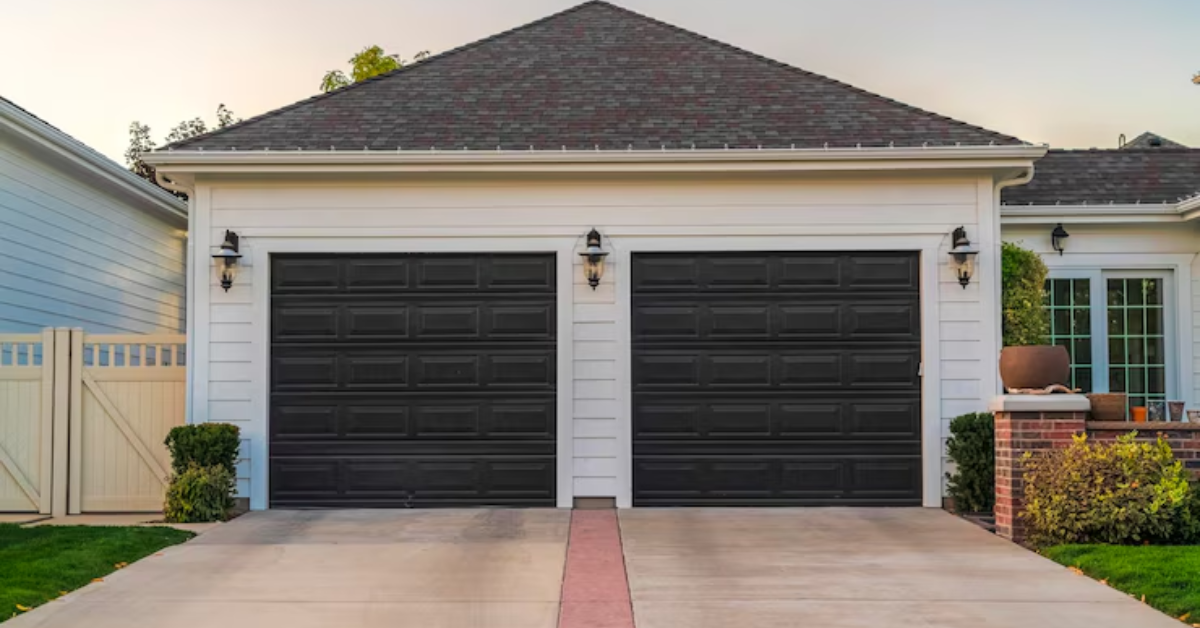How To Tighten Garage Door Springs
Garage door springs are vital components of your garage door system, playing a crucial role in its smooth operation and overall safety. Properly tensioned springs ensure that your garage door opens and closes smoothly, without strain or risk of damage. However, over time, these springs can lose their tension, leading to issues such as difficulty in opening or closing the door, loud creaking noises, or even sudden failures.
Maintaining properly tensioned garage door springs is paramount for several reasons. Firstly, it ensures the smooth and efficient operation of your garage door, preventing unnecessary strain on the opener mechanism and other components. Secondly, properly tensioned springs help to extend the lifespan of your garage door system, reducing the likelihood of premature wear and tear. Also, tight springs contribute to enhanced safety by minimizing the risk of sudden spring failure or the door falling unexpectedly. By proactively maintaining the tension of your garage door springs, you can avoid costly repairs and ensure the continued reliability of your garage door system.
Types of Garage Door Springs
Torsion Springs:
- Torsion springs are typically mounted horizontally above the garage door opening.
- They work by twisting or winding, storing mechanical energy when the door is closed and releasing it to help lift the door when it's opened.
- Torsion springs are known for their durability and smooth operation.
Extension Springs:
- Extension springs are typically installed perpendicular to the door tracks on both sides of the door.
- They stretch and contract as the door opens and closes, providing counterbalance to the door's weight.
- Extension springs are more common in older garage door systems and are relatively simpler in design compared to torsion springs.
How Springs Contribute to the Functionality of the Garage Door
Counterbalancing Weight: Garage door springs counterbalance the weight of the door, making it easier to open and close manually or with the assistance of a garage door opener. Properly tensioned springs ensure smooth operation and prevent excessive strain on other components of the garage door system.
Supporting Movement:
Springs facilitate the controlled movement of the garage door, allowing it to open and close smoothly without slamming shut or jerking. They absorb shocks and vibrations, reducing wear and tear on the door and its tracks.
Safety Mechanism:
Well-maintained springs contribute to the safety of the garage door system by preventing sudden drops or unexpected movements. They help to maintain the door in the desired position, whether fully open, closed, or partially open.
Signs That Your Garage Door Springs Need Tightening
Regular inspection of your garage door springs is essential to ensure they are functioning optimally. Identifying signs of wear or weakness early on can prevent safety hazards and costly repairs.
Common Indications of Loose or Weak Springs
- If you notice that your garage door is unusually heavy to lift manually or struggles to close smoothly, it could indicate weak or improperly tensioned springs.
- An imbalanced garage door, where one side appears to be higher or lower than the other when opening or closing, is often a sign of uneven spring tension.
- Springs under excessive strain may produce squeaking, grinding, or popping noises during operation. These sounds indicate friction or misalignment, which can lead to further damage if not addressed.
Importance of Regular Inspection
- Regular visual inspection of your garage door springs allows you to detect any signs of wear or damage early on, preventing potential breakdowns or accidents.
- Well-maintained springs are essential for the safe operation of your garage door. Promptly addressing any issues with spring tension helps to minimize the risk of sudden failures or injuries.
- By tightening or adjusting springs as needed, you can extend their lifespan and ensure consistent performance of your garage door system over time.
Tools and Materials Needed
Before starting the process of tightening your garage door springs, it's crucial to gather all the necessary tools and safety equipment to ensure a smooth and safe procedure.
List of Necessary Tools for the Job:
- Winding Bars: Essential for winding and adjusting torsion springs safely.
- Adjustable Wrench: For tightening and loosening nuts and bolts.
- Vise Grips: Used to secure torsion springs in place during adjustment.
- Socket Set: Necessary for removing hardware if needed.
- Safety Glasses: Protect your eyes from any debris or spring fragments.
- Gloves: Provide grip and protect your hands during the adjustment process.
- Ladder: To reach the garage door springs safely.
- Measuring Tape: Useful for measuring the length and diameter of springs if necessary.
Safety Equipment Required:
- Safety Goggles: Protect your eyes from potential spring tension-related accidents.
- Gloves: Ensure a firm grip and protect your hands from sharp edges or friction.
- Closed-Toe Shoes: Prevent injuries from falling tools or parts.
- Work Gloves: Provide extra protection and grip when handling springs and tools.
- Safety Helmet: Optional but recommended for additional head protection, especially when working in tight spaces.
Step-by-Step Guide to Tightening Garage Door Springs
1. Preparing the Workspace:
Before you begin, clear the area around your garage door to ensure there's enough space to work safely. Remove any obstructions or items that may interfere with the process. Make sure to disconnect the power to the garage door opener to prevent any accidental activation.
2. Identifying the Type of Springs in Your Garage Door:
Determine whether your garage door operates with torsion springs or extension springs. Torsion springs are typically located above the door, while extension springs are positioned on the sides of the door tracks.
3. Torsion Spring Tightening Process:
1: Locating the Winding Cone:
Identify the winding cone at the end of the torsion spring shaft. This cone holds the tension of the spring.
2: Inserting Winding Bars:
Insert the winding bars into the holes on the winding cone. Use vice grips to secure the bars in place.
3: Winding the Spring:
Using the winding bars, turn the cone in the direction that tightens the spring. Follow manufacturer recommendations for the number of turns needed based on the weight of your garage door.
4. Extension Spring Tightening Process:
1: Locating Extension Springs:
Locate the extension springs along the horizontal tracks on each side of the garage door. They should be attached to the pulley system.
2: Adjusting Tension:
Carefully adjust the tension of the extension springs by moving the S-hook or adjusting the tension clips. Increase tension gradually until the door operates smoothly.
3: Securing Safety Cables (If Applicable):
If your garage door has safety cables, ensure they are properly installed and secured to prevent the spring from becoming a projectile if it were to break.
Following these steps systematically ensures that you tighten your garage door springs safely and effectively, contributing to the smooth operation of your garage door while minimizing the risk of accidents or damage.
Testing and Adjusting
After tightening your garage door springs, it's crucial to test their tension to ensure they are properly adjusted for smooth and efficient operation. Here's how to test and make any necessary adjustments:
1. Testing the Tension of the Springs:
- Close the garage door completely and disconnect the opener to prevent any accidental activation.
- Manually lift the door halfway and release it gently. The door should remain in place without falling or rising.
- If the door falls or rises, it indicates that the tension of the springs is not balanced and needs adjustment.
2. Fine-Tuning Adjustments if Necessary:
- If the door fails the balance test, you may need to make further adjustments to the tension of the springs.
- For torsion springs, use winding bars to add or release tension as needed, following manufacturer guidelines for the number of turns.
- For extension springs, adjust the tension clips or S-hooks accordingly to achieve proper balance.
Maintenance Tips to Keep Springs Tight
To ensure the continued functionality and safety of your garage door springs, it's important to follow these maintenance tips:
Regular Inspection Schedule:
Set up a
routine inspection schedule to check for any signs of wear, damage, or imbalance in your garage door springs. Look for visible signs such as gaps, rust, or fraying cables, which may indicate that the springs need adjustment or replacement.
Lubricating Springs and Other Moving Parts: Apply a silicone-based lubricant to the springs and other moving parts of your garage door system regularly. Lubrication helps reduce friction and prolongs the lifespan of the springs, ensuring smooth operation.
Noticing Unusual Sounds or Behaviors: Pay attention to any unusual sounds, such as squeaking or grinding, when operating your garage door.
Also, be mindful of any erratic movements or difficulties in opening and closing the door, as these may indicate issues with the springs.
Conclusion
Proper maintenance and regular inspection of your garage door springs are essential for ensuring the safety and efficiency of your garage door system. By following a proactive approach to maintenance, including regular inspections, lubrication, and attentiveness to unusual sounds or behaviors, you can keep your springs tight and your garage door operating smoothly.
Remember, the importance of properly tightened garage door springs cannot be overstated. They play a critical role in supporting the weight of the door and ensuring safe operation. Always prioritize safety by wearing appropriate protective gear and seeking professional assistance if needed. By incorporating these maintenance tips into your routine, you can prolong the lifespan of your garage door springs and enjoy reliable performance from your garage door system for years to come.




